
Da, skulpture se mogu raditi i od umjetne magle. Ambijentalne introspekcije, prostor kao filmski efekt, rezbarenje plinovitih stanja.
Fujiko-san's fog sculptures' prime relation to the contact with natural experience belies the intensity of their structure and scientific planning. Most importantly they encourage a contemplation with phenomena and encounter. They are works you can experience not only on classical sculptural terms but also by touch, hyper-ephemerality and a sensation of detachment from the exoteric, deeply fueling the poetic imagination through immersion.
Japanese publisher anarchive released a completely comprehensive/exhaustive print+DVD+DVD-ROM catalogue of her works including planning, video, all sort of data and maps of locations (all of the pieces are large scale and many are in permanant installation). Somewhere between land art, meteorology and performance. A beautiful editon.
Anarchive n°5
FUJIKO NAKAYA 中谷 芙二子
FOG 霧 BROUILLARD
Sculpting fog is a decidedly unusual art. Fujiko Nakaya is its pioneer. This first comprehensive monograph presents more than fifty of her Fog Works created for public spaces all over the world, as well as her video works and paintings. The artist's texts and drawings, archive items, videos and previously unpublished essays by French and Japanese authors, document this exceptional art approach, which reinvents the meeting between art, science and technology. A DVD-Rom and a DVD Video include some rare videos by the artist, as well as a substantial filmed documentation about her Fog Sculptures, from the famous Pepsi Pavilion in 1970 to the most recent ones in 2011.
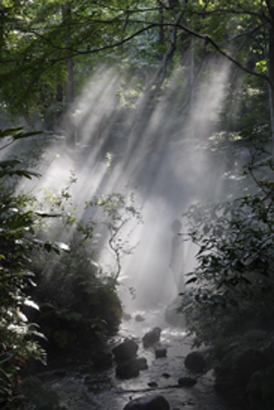
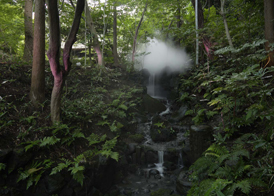
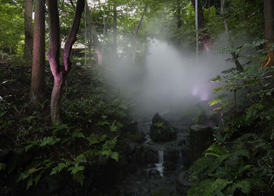
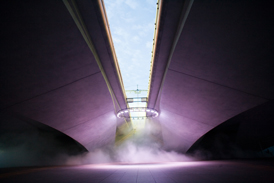
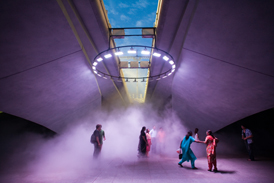
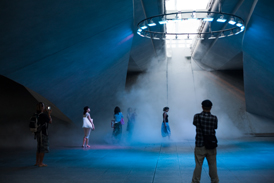
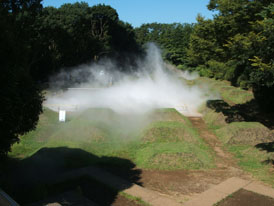
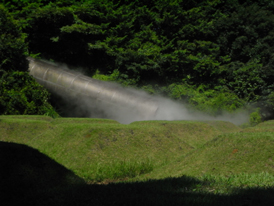
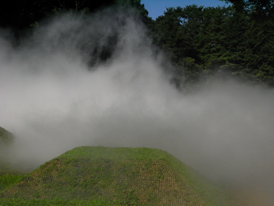

Apparently crystal formation of frozen vapour (snow) is under-researched. Some of the most valuable observations were done in the 1930s by the Japanese physicist Ukichiro Nakaya (above), who turned his attention to the study of snow crystals after experiencing difficulty finding work in the field of nuclear physics. He was the first to grow artificial snow crystals under controlled conditions, and was also pioneering in snow crystal classification. His beautiful 1954 publication Snow Crystals: Natural and Artificial contains the bulk of his research.
Fast forward a few decades and it makes some sense that the scientist’s daughter Fujiko Nakaya has developed a long-term relationship with artificial fog. Living in New York in the 1960s Nakaya mingled with the Experiments in Art and Technology (E.A.T.) group before going on to create ‘the world’s first fog sculpture’ at the 1970 Osaka International Fair. Since then she has worked with the opaque but intangible medium of fog for installations, sculptures and performances around the world, including major commissions at the Australian National Gallery and the Guggenheim Museum Bilbao. She is also credited with opening Video Gallery SCAN, Japan’s first media art gallery, in Harajuku in the 80s, and she has organised biannual TV/video festivals in Tokyo for many years.

Gas sculpture is a proposal made by Joan Miró in his late writings to make sculptures out of gaseous materials.
The idea of a gas sculpture also appeared in the book Gog, by Giovanni Papini (1881–1956).
An example of pure water fog sculpture is in the sculpture garden at the National Gallery of Australia in Canberra. A large bank of very small nozzles is arrayed on the edge of a small rush-filled pond, and when the power is switched on a fine mist of fog billows out. The "sculpture" has a continuously changing shape as it is affected by the water, the rushes, and the air currents in the area.
Technology
Cold water fog nozzle technologies were developed by industry in the late 1960s for factory air particulate control and agricultural orchard freeze prevention. These high pressure systems force filtered water at 1500 - 3000 p.s.i. through custom nozzles to atomize the water into billions of ultra-fine droplets below 10 microns in size. In industrial applications this also provides cooling due to rapid evaporation.Artists use this cold water fog technology to make experimental artworks that allow the viewer to safely interact and become fully immersed in the fog.
High temperature steam fog from underground steam utility lines used for commercial heat transfer, and small boiler sources, are also used by artists for atmospheric visual displays, and as a dynamic projection surfaces.
In the commercial entertainment industry these various water fog systems are used for special effects in movies, and for theme park atmospherics.
Some kinetic sculptures contain other gaseous elements, such as the sculptures of Jean-Paul Riopelle's La Joute, which includes natural gas fire jets, a water fountain, and bronze sculptural elements.
Contemporary Fog Sculptures
A large scale use of cold water fog is the Blur Building (2002), an exhibition pavilion built for Swiss Expo.02 on Lake Neuchatel by architects Diller Scofidio + Renfro. This is an architecture described as "an inhabitable cloud whirling above a lake", built with an atmosphere of fog surrounding a lightweight tensegrity structure 300 feet long, by 200 feet wide, by 75 feet high. The primary visible building material is water. Water pumped from the lake is filtered and atomized to a fine mist through an array of 31,500 high-pressure nozzles. The nozzle pressures are regulated by a computer processor and a smart weather system that reads temperature, humidity, wind speed and direction. The fog created is thus in constant change, an interplay of natural and man-made forces. Two bridges connect the building with the shore, four hundred visitors at a time can enter the building and be within the fog mass. Inside the fog, one's normal spatial references are lost when immersed within an optical “white-out”, and the “white noise” of hissing nozzles.Artistic use of steam fog was pioneered in the collaborative Center Beam artwork by the Center for Advanced Visual Studies at MIT. First shown in 1977 at documenta 6 in Kassel, Germany, it included steam works by Joan Brigham, Otto Piene, and Paul Earls. For Center Beam, a low pressure hot water steam fog became a medium to project lasers, holograms, films and text onto.
The Children's Museum of Pittsburgh is planning a new park with a fog sculpture created by Ned Kahn. Set for completion in 2012, the sculpture will be a 30-by-30-foot grid of stainless steel poles outfitted with fog nozzles. Kahn said of the sculpture, "When the fog is on, it will appear like a 20-foot-diameter sphere of fog spinning inside the poles. The mist will be cooled during the summer and warmed in winter."
Other contemporary sculptures in which fog is used as a medium of expression are: Harbor Fog, a viewer responsive artwork in the parkland above Boston's Big Dig highway; Cloud RIngs (2006) by Ned Kahn at the 21c Museum Hotel in Louisville, Kentucky; and the interactive landscape of Dillworth Plaza at Philadelphia City Hall (completion date 2013).- wikipedia








Nema komentara:
Objavi komentar